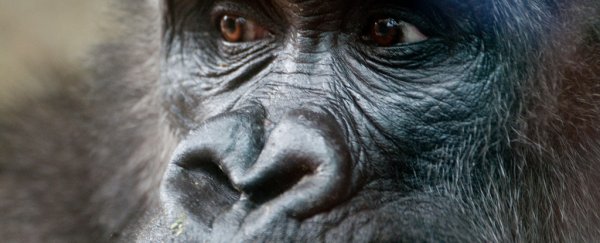Two of the HIV strains that infect humans came from gorillas, a new study has found. The HIV-1 virus, which causes AIDS, jumped from apes to humans four separate times in history, creating four individual strains - M, N, O and P.
We already knew that the M and N strains infected humans from chimpanzees, most likely in southern Cameroon. But the origin of the other half of the HIV-1 strains remained unknown, up until now.
A team of researchers from the University of Montpellier in France has now found that the two remaining HIV-1 strains, O and P, began in western lowland gorillas (Gorilla gorilla gorilla) in southern Cameroon. And they conclude that they most likely infected humans through the consumption of bush meat.
"Thus, both chimpanzees and gorillas harbour viruses that are capable of crossing the species barrier to humans and causing major disease outbreaks," the team concluded in a paper published in the Proceedings of the National Academy of Sciences.
All four strains of HIV-1 have had dramatically different journeys in humans. The M strain is the most common one, which has infected more than 40 million people worldwide and caused the modern AIDS pandemic. The P and N strains are found in only a handful of patients, while the O strain has infected around 100,000 people in Africa. But understanding the origins of all of them is important in the fight against the virus.
"Understanding emerging disease origins is critical to gauge future human infection risks," said lead virologist Martine Peeters in a press release. "From this study and others that our team has conducted in the past it has become clear that both chimpanzees and gorillas harbour viruses that are capable of crossing the species barrier to humans and have the potential to cause major disease outbreaks."
To uncover where the two remaining strains of the virus came from, the team of scientists genetically analysed faecal matter collected from gorillas across central Africa, to find whether any were infected with a simian version of HIV, known as SIV.
They found evidence of O and P HIV-1 strains in the western lowland gorillas, and the results suggest that the O strain emerged at the beginning of the 20th century, while the P strain originated later in the 1900s.
Interestingly, the team couldn't find any genetic reason that these virus strains hadn't been as pandemic-causing as the M strain.
"On this occasion, humans got lucky," co-author Beatrice Hahn from the University of Pennsylvania in the US told Reuters.
Read this next: Scientists have pinpointed where HIV originated
